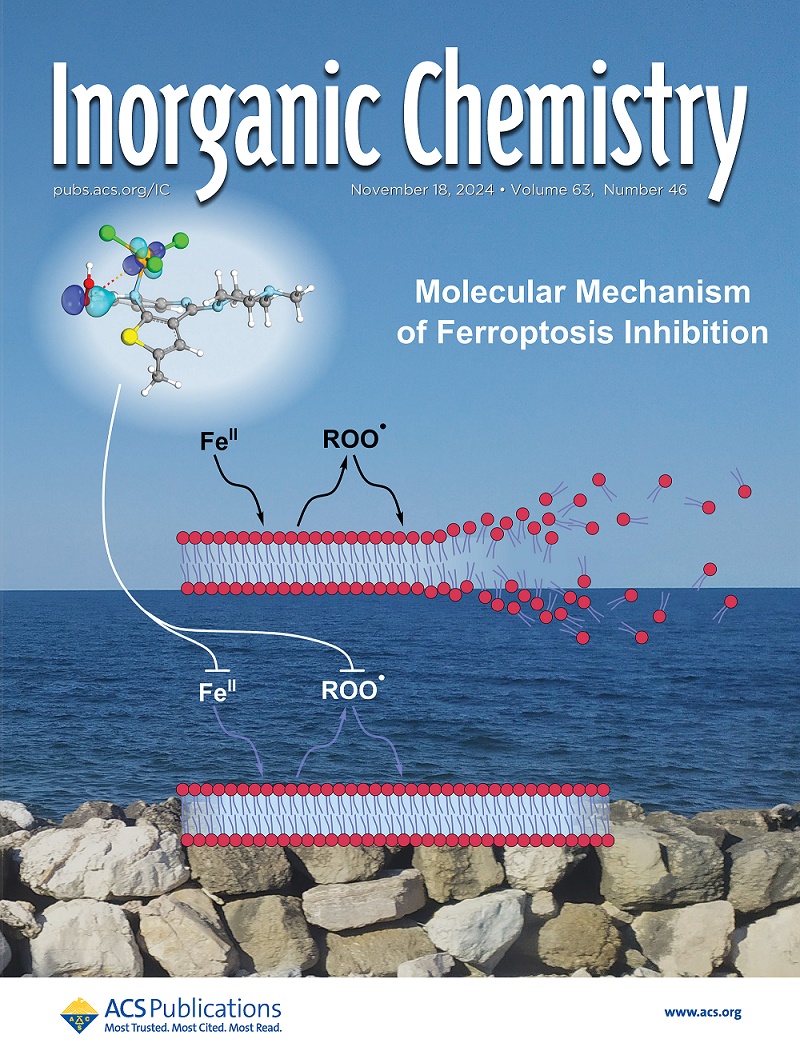高性能钠离子电池双金属普鲁士蓝阴极容量与稳定性的平衡控制。
IF 4.7
2区 化学
Q1 CHEMISTRY, INORGANIC & NUCLEAR
引用次数: 0
摘要
普鲁士蓝类似物(PBAs)具有开放的三维骨架结构和发育良好的钠离子扩散通道,是钠离子电池极具发展前景的正极材料之一。然而,PBAs的实际应用仍然面临着很大的挑战,如阴离子空位含量高,结构稳定性差。本文采用简单的共沉淀法合成了镍锰双金属PBAs,通过调整镍(电化学惰性元素)和锰(电化学活性元素)的比例,可以有效地控制电池的充放电深度。通过精确优化两者之间的比例,可以合理调整充放电性能,从而提高电池的整体效率和稳定性。双金属PBA作为sib的正极材料,具有优异的比容量、优异的多重性能和长周期稳定性。特别是,Ni0.1Mn1.9HCF电极在500 mA g-1的电流密度下,经过100次循环后,其容量保持率高达70.5% (~ 55.4 mAh g-1)。此外,在共晶电解质中,所有材料的循环稳定性都得到了进一步的显著提高。一种新颖、简单的策略为sib的PBA阴极容量和循环稳定性的平衡控制提供了有效的方法。本文章由计算机程序翻译,如有差异,请以英文原文为准。
Balance Control of Capacity and Stability of the Bimetallic Prussian Blue Cathode for High-Performance Sodium-Ion Batteries.
Prussian blue analogs (PBAs) are one of the most promising cathode materials for sodium-ion batteries (SIBs) due to their open three-dimensional backbone structure and well-developed sodium-ion diffusion channels. However, the practical application of PBAs still faces great challenges, such as a high content of anionic vacancies and poor structural stability. In this work, we synthesized nickel-manganese bimetallic PBAs by a simple coprecipitation method, and adjusting the ratio of nickel (electrochemically inert element) and manganese (electrochemically active element) can effectively control the charging and discharging depth of the battery. By precisely optimizing the ratio between the two, the charging and discharging performances can be reasonably adjusted, thus improving the overall efficiency and stability of the battery. As the cathode material of SIBs, bimetallic PBA shows excellent specific capacity, outstanding multiplicity performance, and long-term cycle stability. Especially, the capacity retention of the Ni0.1Mn1.9HCF electrode can be maintained as high as 70.5% (∼55.4 mAh g-1) after 100 cycles at a higher current density of 500 mA g-1. In addition, the cycling stability of all materials was further significantly improved in eutectic electrolytes. A novel and simple strategy can provide an effective method for the balance control of capacity and cycling stability of the PBA cathode for SIBs.
求助全文
通过发布文献求助,成功后即可免费获取论文全文。
去求助
来源期刊

Inorganic Chemistry
化学-无机化学与核化学
CiteScore
7.60
自引率
13.00%
发文量
1960
审稿时长
1.9 months
期刊介绍:
Inorganic Chemistry publishes fundamental studies in all phases of inorganic chemistry. Coverage includes experimental and theoretical reports on quantitative studies of structure and thermodynamics, kinetics, mechanisms of inorganic reactions, bioinorganic chemistry, and relevant aspects of organometallic chemistry, solid-state phenomena, and chemical bonding theory. Emphasis is placed on the synthesis, structure, thermodynamics, reactivity, spectroscopy, and bonding properties of significant new and known compounds.
 求助内容:
求助内容: 应助结果提醒方式:
应助结果提醒方式:


